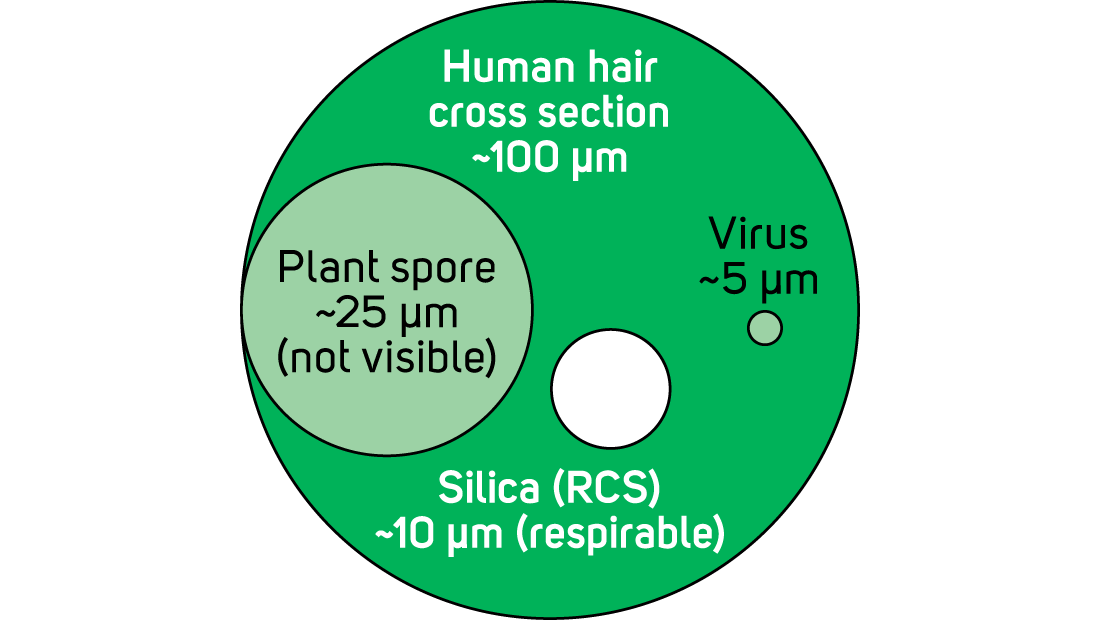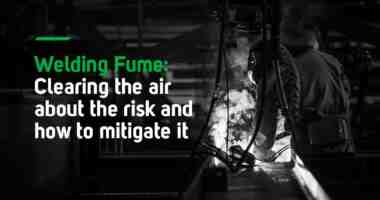

A 5 o’clock shadow may look good, but that stubble can break the seal of a tight-fitting respirator. Tight-fitting respirators need to tightly seal around the face or neck to provide clean breathing air to the user. Small gaps caused by facial hair can compromise that seal. However, stubble isn’t the only offender – beards, moustaches, sideburns, and any other hair can cause gaps in the seal, too. That tiny space allows contaminated air to pass through the seal, going straight into the lungs instead of being filtered through the respirator cartridge. Someone using a tight-fitting respirator with a bit of facial hair may think they’re protected from the harmful air, but their respirator is unable to perform its basic function to clean the air they are breathing in.
What’s the Danger?
NIOSH, the National Institute for Occupational Health and Safety in the United States, declares “facial hair under the sealing surface causes 20 to 1,000 times more leakage compared to clean-shaven individuals.” Toxic particulates vary within each work environment, but they remain poisonous all the same. Toxic particulates from dust, gases, vapors, smoke, and fumes can be undetectable, leaving workers without proper respiratory protection exposed to hazardous chemicals. Some particulates such as silica dust, beryllium, and welding fumes are tinier than the thickness of a human hair, meaning they can slip through a tight-fitting respirator seal broken by the growth of said human hair.

Tight-fitting respirators also require fit testing annually. This test takes about 15-20 minutes and the end user must test with the exact make and model of respirator they intend to use on the job. Any change to the end users’ face, such as facial hair, facial scarring, major dental work or surgery, and significant weight loss or gain, means the respirator needs to be refitted. The danger is that fit-testing is only required once a year, but facial hair on men grows daily, leaving many men unexpectedly unprotected. “A respirator can't protect you if it doesn't fit your face. It's that simple,” OSHA states.
How Much Facial Hair Is Too Much?
Facial hair grows at different rates for everyone, but just half a day’s growth is enough to break the seal of a tight-fitting respirator. This means that for a morning shift worker, their tight-fitting respirator may be ineffective and unsafe by lunchtime. What’s more, it's illegal for employers to allow tight-fitting respirators to be worn by employees who have facial hair that would meet the seal, according to NIOSH. Typically, this means a tight-fitting respirator is not an appropriate option for anyone with a full beard.
What Can I Do?
Short of shaving multiple times a day, workers can be better protected – and keep their facial hair – by wearing a loose-fitting respirator. The difference is that a loose-fitting respirator seals around the neck or under the chin and covers the entire head. Workers can sport whatever kind of facial hair they fancy and breathe in clean air. No need to fit test, shave constantly, or worry about breathing contaminated air. Safety and Health states “When suitable, they can also reduce the administration cost and time requirements of fit testing while maintaining broader employee morale and labor pool options.”
OSHA states, “Loose-fitting respirators do not depend on a tight seal with the face to provide protection.” This means a user can keep his beard, moustache, and sideburns and stay safe, too. Keep that hair and breathe in clean air.
So this Valentine’s Day, show your facial hair and your lungs some love with a loose-fitting respirator.

